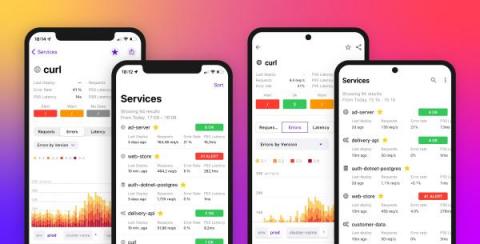Operations | Monitoring | ITSM | DevOps | Cloud
Latest News
How to Improve Your Spotify Adoption
The ecommerce industry is booming. While the pandemic accelerated the need for businesses to digitalize, advancements in technology and the surge in available marketplaces also helped ease buying and selling online. According to Shopify, the ecommerce industry is expected to grow by almost $11 trillion by 2025. Online stores are popping up every day – with an estimated 12-24 million ecommerce sites globally.
Biggest Mistakes Companies Make When Evaluating & Purchasing APM Software
Most modern companies that offer web or mobile apps use APM at some stage to enhance their growth. APMs help you to understand what's going on inside your app. It helps you know when something breaks, and it also helps you learn how to make sure it doesn't happen again. However, choosing the right APM solution for your product is complex. If you select the incorrect tool, you may discard it because it will not enable you to meet your observability objectives.
What is performance engineering?
All organizations are grappling with the challenge of modern applications and infrastructure. Here's how an effective performance engineering strategy can help.
Monitoring the AVD Broker
A legacy way to deploy applications and desktops on Azure was often to put some Server 2022 VMs (Virtual Machines) in Azure running the standard RDS (Remote Desktop Services) roles – session hosts, brokers, gateway etc. and then pay the compute costs for your session hosts, brokers, and gateways, set up a public IP address and open ports.
How to Monitor and Troubleshoot Multi-cloud Applications
Multicloud and hybrid cloud applications are deployed on multiple cloud vendor platforms, including on-premises private cloud. While these platforms offer tremendous benefits by providing a reliable and scalable platform for fuelling digital transformation, they also add significant monitoring complexity. Site reliability engineers (SRE) need multicloud monitoring visibility to: Why is this important?
Monitor application performance from the Datadog mobile app
When you’re on-call for a critical service and get alerted to an issue that could impact customers, you need quick access to key performance metrics in order to effectively troubleshoot. But all too often, digging into this data requires you to switch from your mobile device to a laptop, restricting your ability to troubleshoot on the go and disrupting your routine.
Django Monitoring and APM Benefits
Django is growing to become one of the most popular web frameworks, and it's built on top of Python, among the easiest programming languages to start with. As the number of companies releasing Django apps increases, it is natural that the need for Django monitoring will also increase. In this guide, we will share the benefits of implementing monitoring in a Django application. Without further ado, let's begin!
How Cisco AppDynamics partners can win the ($36 billion) observability market
Developing an observability practice brings opportunity for AppDynamics partners to expand customers' relevance and profit at every step of their digital journey.










